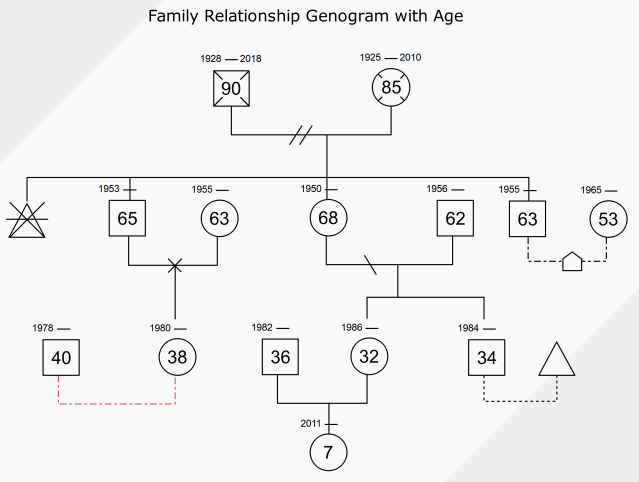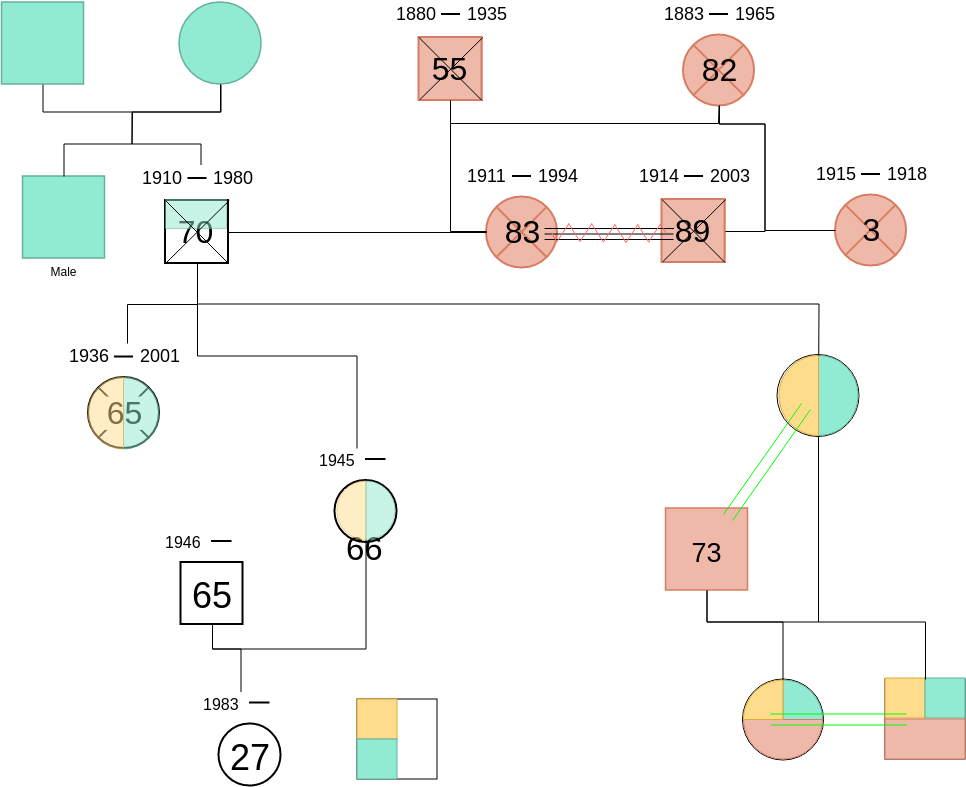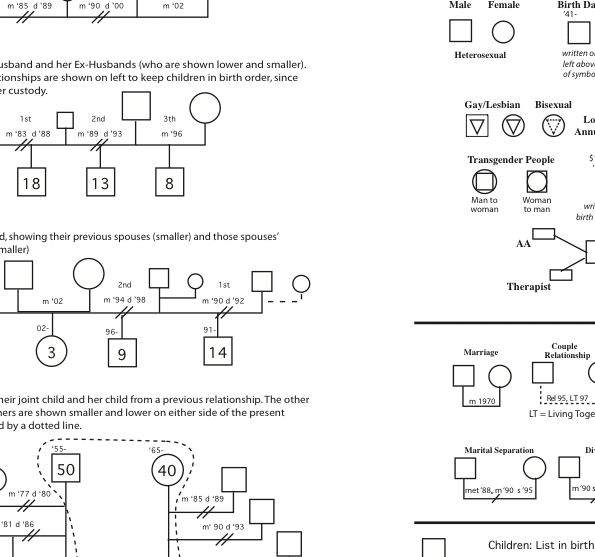
Two lines with a bracketed gap in the middle denotes that a cut-off happened, or that communication completely stopped for a significant amount of time. Jagged lines represent abusive dynamics between a pair of family members. If she felt emotionally distant from her younger brother, I draw a dotted line to connect them. For instance, if a client was very close with her older sister, I draw two solid lines connecting their respective shapes on the graphic. Genograms use different kinds of lines to denote different kinds of relationships. Talking about all of these nuances and how they apply to a client’s unique sibling constellation can often deepen understanding of and compassion for family members and help illuminate the hidden, pre-programmed motivations behind everyone’s behavior. If both parents are first-borns, they will probably raise three children who all have a noteworthy amount of first-born traits, regardless of their actual birth order. A middle-born mother is more likely to identify - and therefore favor - her own middle-born daughter than she is likely to identify with her first or last-born children. The birth order of one’s parents also plays a part.

If you were, say, seven when your younger sibling was born, that sibling will likely have some first-born characteristics. Another exception occurs when more than five years separates the births of two children. If a first-born daughter, for instance, has a major disability, her younger sister will probably display more first-born traits. One must also consider the physical and mental health of their family members.

If a last-born individual presents more like a first-born, it might be that he is a first-born son with one older sister. For example, gender can make a big difference.

But usually the reason behind a given discrepancy is relatively predictable. Of course, not everyone fits the mold suggested by their birth order. Perhaps they received the message that they were stupid or inferior, or that their opinion didn’t matter enough. But in some cases, to some degree they’ve also endured bullying at the hands of their older siblings. Last-borns, on the other hand, love to have all eyes on them they tend to be the funny, fun-loving sibling with good people skills. Middle-borns are typically not comfortable with being the center of attention because they never got a lot of practice in that role. They are very loyal and place a deep value on friendship, but at the same time they can be secretive. These individuals are often the ones who defuse conflict amongst other family members. Middle-born children take the opposite approach of their older sibling they do their own thing. Unlike later-borns, these children only have adults to emulate and are therefore resemble “little adults” themselves. They are conscientious and reliable, often utilize black-and-white thinking, and love to read. There are well-tested theories that make strong connections between personality and whether someone is a first-born, middle-born, or last-born child.įirst-borns, for instance, tend to be perfectionists, leaders, over-achievers. In exploring sibling relationships, I like to provide clients with some psychoeducation on birth order. Genograms can help underscore the impact that siblings have, as well. We typically take for granted that our parents have the most significant effect on our development. In many cases, people need an entire session to start exploring the relational dynamics that existed and might still exist amongst them and their siblings. (See how Greg’s father remarried and had Greg’s younger half-sister with his second wife, Becky.) This structure changes to accommodate multiple marriages. If a sibling is older, they are placed to the left of the index person if younger, to the right.

The next step is to add siblings, assuming there are any. (Note in the hypothetical example above that Greg is this person.) I outline this shape again to denote that they are the index person around whom the genogram will grow. Squares are for males, circles are for females, and a combination of one inside the other is for transgender individuals. I represent them on the page with their name and a shape to designate their gender. When building a client’s genogram, I always start with when they were born. More chronological depth means an opportunity to recognize more patterns. Some clients, though, can provide information that goes even farther back in time, which is ideal. At minimum, a genogram represents three generations of one family. For certain personalities, it’s a very appealing way to begin the psychotherapy process. The genogram is a kind of family tree that not only provides important names and dates, but also denotes patterns of relationship, mental health, and more.


 0 kommentar(er)
0 kommentar(er)
